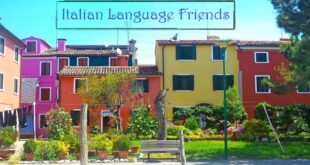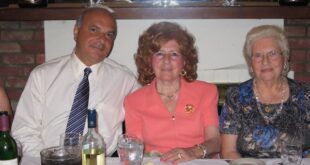As I was hustling between the raindrops en route to our place in the local Memorial Day Parade (my daughter’s grammar school class marches every year and I’m in charge of the all-important tossable candy), I was stopped by a group of “bikers” in the parade who have come to my rock shows before. “Hey, thanks for all the great music. We come to all your shows,” the leather-clad rider said. A couple other Harley owners also gave me a “thumbs up.”
Now, I am not a biker nor have I ever ridden on one before. Have I ever wished that I were cool enough to hop on one on a Sunday morning and ride at the crack of dawn through the suburbs of Chicago? Absolutely! But I guess the length of my legs versus the distance from the seat to the ground has kept me from “carving a canyon on my ape-hanger chopper, flogging it and burning rubber until I’m left with a gumball of a rear tire.” That was something I used to pretend to do on my banana-seated Schwinn three-speed on the gravelly streets of Chicago in the early ’70s.
No, I may not be a biker, but I am a huge fan of them. Those classic riding machines represent the essence of “cool.” Although they were invented in the late 1800s and mass-produced during the First World War (both Harley Davidson and Triumph brands kicked their production into “high gear” to meet the wartime demand), it was the countercultural attitude of riders like James Dean and Marlon Brando that helped to define the personality of the motorcycle. Even Buddy Holly and his Crickets had motorcycles, and Elvis had three three-wheelers!
In a recent conversation I had with the great Ronnie Spector at her show at The Arcada, we were discussing great “girl groups,” and the Shangri-Las came up. In 1964, the vocal group released the teenage-tragedy song, “Leader Of The Pack.” The song was about a young girl’s parentally-induced breakup with a leader of a motorcycle gang. Distraught over the news, he sped off, and despite the girl’s pleas to slow down, the biker crashed and died. A dark plot, for sure, but the song’s “poppy” arrangement turned it into a No. 1 hit on the Billboard charts. Ronnie said the song was typical of many of the day, noting the serious challenges of being a teenager, even back then.
1969 was such a tumultuous year on many fronts, including rock music AND the “persona” of the motorcycle rider. It was the year that the iconic film “Easy Rider” was released. Peter Fonda and Dennis Hopper starred as a “Wyatt Earp and Billy The Kid”-esque duo that travelled the country on a drug-filled experience on motorcycles, with Phil Spector playing a drug kingpin.
Before a Lynyrd Skynyrd/Steppenwolf concert I produced last year, I was able to spend some time with John Kay of Steppenwolf. He does on 12 concerts a year at most, and mine was one of them! I asked him about “Easy Rider” since his song “Born To Be Wild” came to be the movie’s anthem. “They weren’t even going to use it at first,” he said. “They just had it there as what they called a ‘place holder’ until the Crosby, Stills & Nash final version of the opening song was finished. They had some big guns working on the music at the time. Bob Dylan actually wrote the opening lines of ‘The Ballad Of Easy Rider,’ but then gave it to Roger McGuinn of The Byrds, who finished the song and performed it in the film. Then Crosby backed out of doing the opening song, and the movie opened with “Born To Be Wild,” and I bought my house because of it!”
The persona of the “motorcycle rider” took on an even darker edge in 1969 as a result of the Altamont Speedway Free Festival in California. The Hell’s Angels motorcycle club was contracted to be the security for what was to be “Woodstock West.” Violence at the 300,000-attendee show ran rampant, culminating in the stabbing of an African American man by a Hell’s Angel. The Jefferson Airplane was on the bill, along with others, including The Grateful Dead (organizers of the event who wound up not even performing because of the violence) and The Rolling Stones, who closed the show (unintentionally). It got so bad that even Mick Jagger stopped the show to plead with the audience to settle down and get along. The Angels were “to be paid in beer,” so I think this strategy may have added to the conflict.
Marty Balin, founder of The Jefferson Airplane, performed a 50th anniversary show at The Arcada this year. He was very easy going, so I asked him about that fateful night. “I got punched in the head by a Hell’s Angel,” he recalled. “It knocked me out. It was the scariest night of my life. Nobody knew what to do or where to go. Even Mick got sucker punched by somebody. Its one thing when the crowd gets into it, but when the performers are attacked as well, it is REALLY scary!”
This past weekend, we had the son of Led Zeppelin Drummer Jon Bonham, Jason Bonham, perform his “Led Zeppelin Experience at The Arcada.” His father, who died of alcohol poisoning many years ago, was infamous for riding his motorcycle down hotel hallways and parking them in suites after throwing televisions out of the windows. I asked Jason about it and he smiled, shook his head and said, “That was my dad! I can’t imagine getting away with that sort of crap these days!”
Getting back to the show I did with John Kay of Steppenwolf, well, we did some promotional activities earlier that day. He was extremely cool, and extremely appreciative of the motorcycle culture that supported his music over the years. He asked me if there were any biker events in the area. So we visited this huge ride that culminated in a massive food drive for hungry families. He shook hands and welcomed everyone, thanking them for their support of not only him, but for helping to make the event a success. And as I looked around at the thousands of riders there, I had my revelation.
So if I am not a rider, then why am I a “huge” fan? With all the stereotypes of bikers out there — both the open road, free-stylin’ good and the tough, gang-banging not so good, — I see one thing that is consistent with ALL riders. It is a common thread that unites the brotherhood of bikers across the country, from weekend warrior lawyers to full-time Harley jockeys. There is something that symbolizes a shared pride by them all.
What is it? It is the American flag. Rarely do you see a motorcycle without that symbol of freedom waving in the wind. On many of those same bikes flies the P.O.W. M.I.A. black and white as well. Riders all share that same pride in country that has kept us strong enough to withstand the challenges a growing society faces.
So thank you to those riders who don a red, white and blue bandana, duct tape an unfurled American flag coming off the bike’s rear fender, turns up “Born To Be Wild” on the iPod (I can’t believe I’m saying that) and hits the open road to enjoy what life has to offer. Yes, motorcycles and rock ’n’ roll go hand in hand as symbols of our American freedom, to a lesser degree but similar to our veterans who remember those who fought and died for our country.
One day I plan to ride, I can Harley wait!
 Fra Noi Embrace Your Inner Italian
Fra Noi Embrace Your Inner Italian






